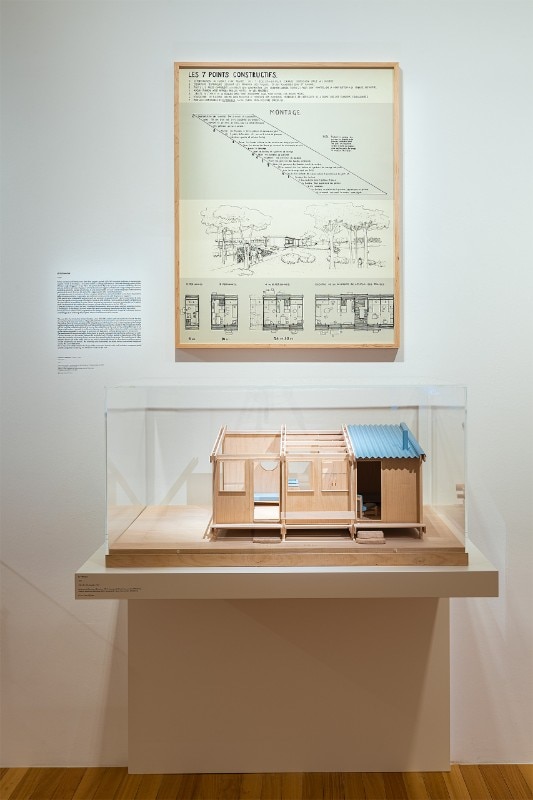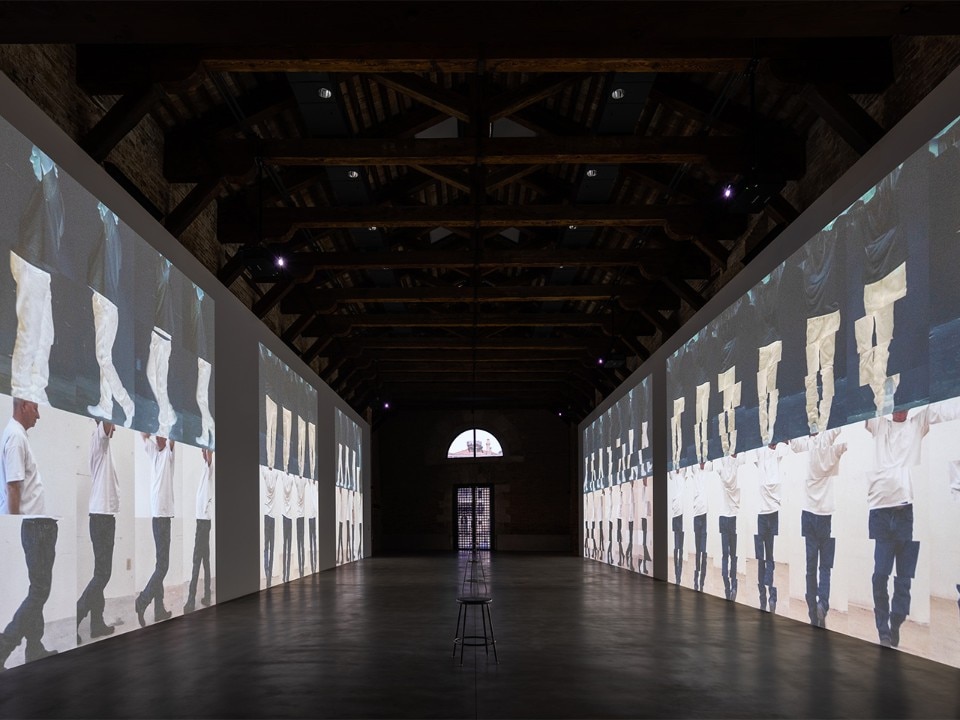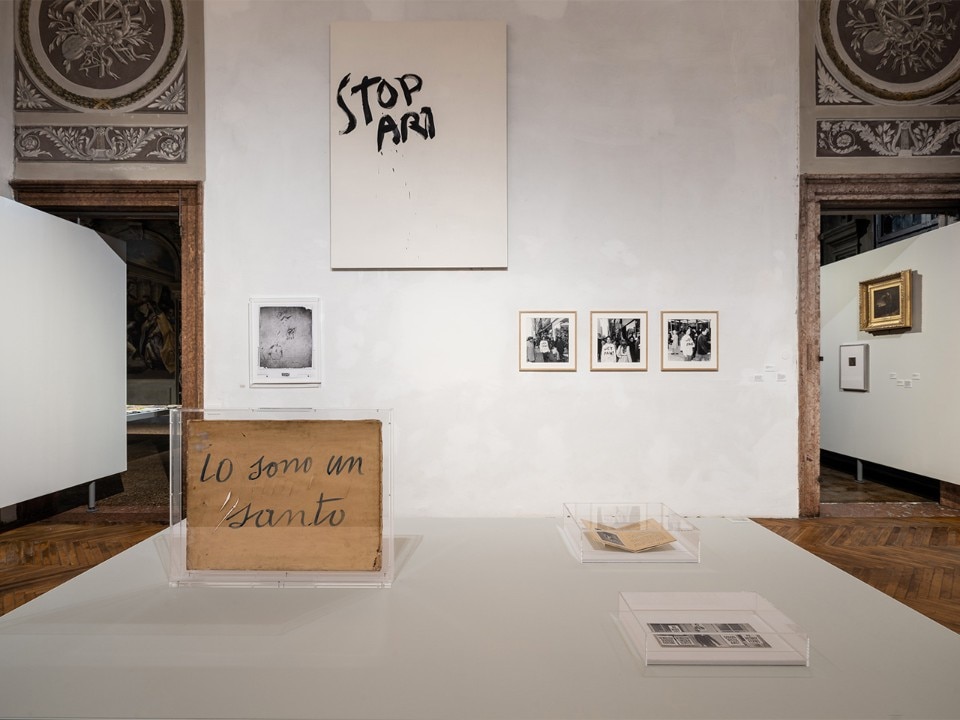One should stay in Venice for a long time and take it slow to follow the city’s ancient rhythm. However, this is a luxury only few can afford, and while it is true that this year’s exhibition by the curator of the Architecture Biennale Hashim Sarkis goes beyond the strictly disciplinary boundaries, the city that hosts it is in itself “interdisciplinary”. Here, everyday life, history, architecture, university research, ancient and contemporary art, and craftsmanship are intertwined – while the number of inhabitants is decreasing. Will we really manage to change it, then? And if the Biennale is the epitome of Italian and international public investment in the contemporary arts, the city is also the headquarters of the many foundations of the tycoons, heirs and collectors of old industrial families, leaders of the luxury sector and great industrial executives devoted to culture. This is how the industry world shows itself to Venice – the real industry, the one outside the borders of the lagoon city, is in Porto Marghera and in the mainland of the industrious region of Veneto. As it used to be since the dawn of the city’s richness.

Ocean Space
Ocean Space, the interdisciplinary space dedicated to the oceans by Thyssen-Bornemisza Art Contemporary (TBA21) in San Lorenzo Church hosts two exhibitions that ask for “sense and sensibility”. In the deconsecrated church, split in two by the remains of the wall separating the sector of the church that is open to the public and the one that belonged to the cloistered nuns of the adjacent former convent, we are greeted by “Territorial Agency: Oceans in Transformation”, an installation that is the result of three years of research into the relationship between human actions and the changes occurring in the oceans. It’s a data visualization experience which, starting with the sea level rise, one of the most visible signs of climate change, analyses all kinds of human exploitation activities. Assessing the latest scientific findings, the project reaffirms the crucial role played by the oceans for the survival of the planet. Beyond the wall, we find ourselves in “The Soul Expanding Ocean #1” by artist Taloi Havini, originally from the Autonomous Region of Bougainville in the Southwest Pacific Ocean. It’s a complex work that blends a blue and azure material installation – the colours of the sea and the mantles of the madonnas that probably once inhabited the church – with a bewitching sound installation. Sitting for a while on her blue island and listening to the sounds that fill the space restores an ocean that seems at peace with humanity.
Georg Baselitz
Palazzo Grimani, a recently restored public museum, is a real gem. In the only 16th-century Roman-style palazzo in Venice, stripped over the centuries of all its pieces of furniture and works of art, there’s “Archinto”, an exhibition by Georg Baselitz, the German artist who has a long history with the city. But perhaps, even more than the exhibition, it is the series of works that will fill the empty frames of the Sala del Portego and that will then be given on loan for use to the palazzo, that gives an idea of the size of the intervention, which was made possible by the funds raised by Venetian Heritage, with a public-private partnership operation that does not debase the res publica. Following a model tried out at the Castello di Rivoli in the 1980s, contemporary art has been grafted onto an ancient residence, where the Sala del Doge has been reconstructed with the Greek and Roman sculptures that were part of the Grimani collection – a Stendhal’s syndrome vision.
Studio Mumbai and Luisa Lambri
The exhibition by Bijoy Jain – Studio Mumbai and Luisa Lambri at the Alma Zevi Gallery is very small and elegant, and it takes some effort to get used to it after such magnificence. It is a room with two delicate works relating to each other and to the city. Jain’s aerial bamboo sculptures arrived in Venice on their own because covid-19 prevented the Indian architect from travelling, and they were covered in golden leaves by a local craftsman. Lambri also worked on the colour of gold, photographing the details of the inserts of Carlo Scarpa’s intervention at Palazzo Querini Stampalia. In this exhibition, gold is not the arrogant demonstration of wealth but rather the light that runs through things.
Elena Cologni
At the Fondazione Bevilacqua La Masa Palazzetto Tito, “Pratiche di cura, o del cur(v)are”, the beautiful exhibition by Elena Cologni, an Italian artist based in Cambridge, is a tale made up of drawings, sculptures, installations, and performative choreographies. Her work is the result of in-depth research into the places in which she operates, and shows her way of acting with and for the communities in which she carries out her projects.
Charlotte Perriand and Frank Gehry
A few steps from San Marco, the Venetian branch of the Fondation Louis Vuitton presents a small but much sought-after exhibition, a side event of the Biennale, which compares the works of Charlotte Perriand and the first phase of Frank Gehry’s research with two projects exhibited for the first time: Tritrianon (1937) by Perriand and Power Pack (1969) by Gehry. They are works that respond to the all-too-current need for low environmental impact housing, from minimal dwellings to the energy autonomy of buildings.

Maria Thereza Alves and Jimmie Durham
In the Giardini Reali next to San Marco – yes Venice is also green – the work of Labinac, the collective founded in Berlin by artists Maria Thereza Alves and Jimmie Durham, is on display. “Echoes of the Forest”, which is the title of the exhibition, includes, among other things, thirty tables made specifically for the gardens inspired by the endemic Mediterranean pine tree. The metal legs and green resin tops create artificial creatures that gracefully sit in the garden, which is artificial too but made of plants by landscape architect Paolo Pejrone, and in the greenhouse. The gardens, restored by the Venice Gardens Foundation, again thanks to the collaboration of public and private institutions, had reopened in December 2019 – before the pandemic brought everything to a halt.
Le stanze del vetro
The Giorgio Cini Foundation in San Giorgio, as part of Le stanze del vetro, the yearly exhibition dedicated to promoting the culture of glass, presents “L’Arca di vetro. La collezione di animali di Pierre Rosenberg”, composed of hundreds of animals made in Murano that the historic director of the Louvre in Paris collected during his visits to Venice. The quality of the exhibitions proposed by the foundation is confirmed by a beautiful, child-friendly exhibition design, with the Domus Archive also contributing to the catalogue.
Maarten Baas
At the Fondaco dei Tedeschi, the designer Maarten Baas, in collaboration with Theun Mosk, has created a large installation called “Second Act” where the Sweeper clocks, part of the famous Real-Time Clocks series, are also on display.
Bruce Nauman, Peter Fischli
“Bruce Nauman. Contrapposto studies” is hosted at Punta della Dogana. The exhibition shows historical and recent works by the great American artist who has been exploring different languages since the 1960s and investigating the very definition of artistic practice. Finally, artist Peter Fischli has curated an exhibition for the Fondazione Prada in which he questions the presumed death of painting, searching for the breaking point that would have undermined its fertility as a language. These two major exhibitions are definitely worth visiting.

















